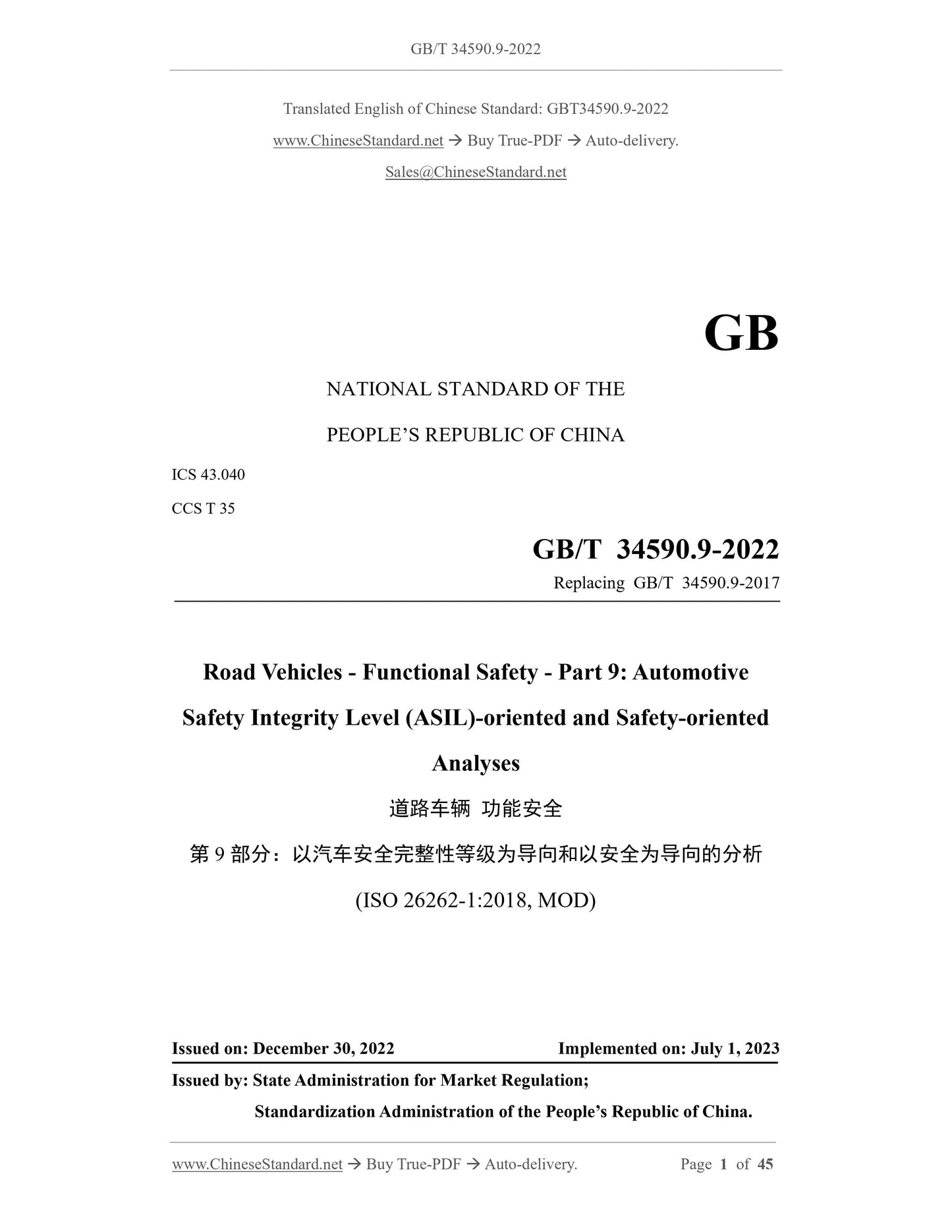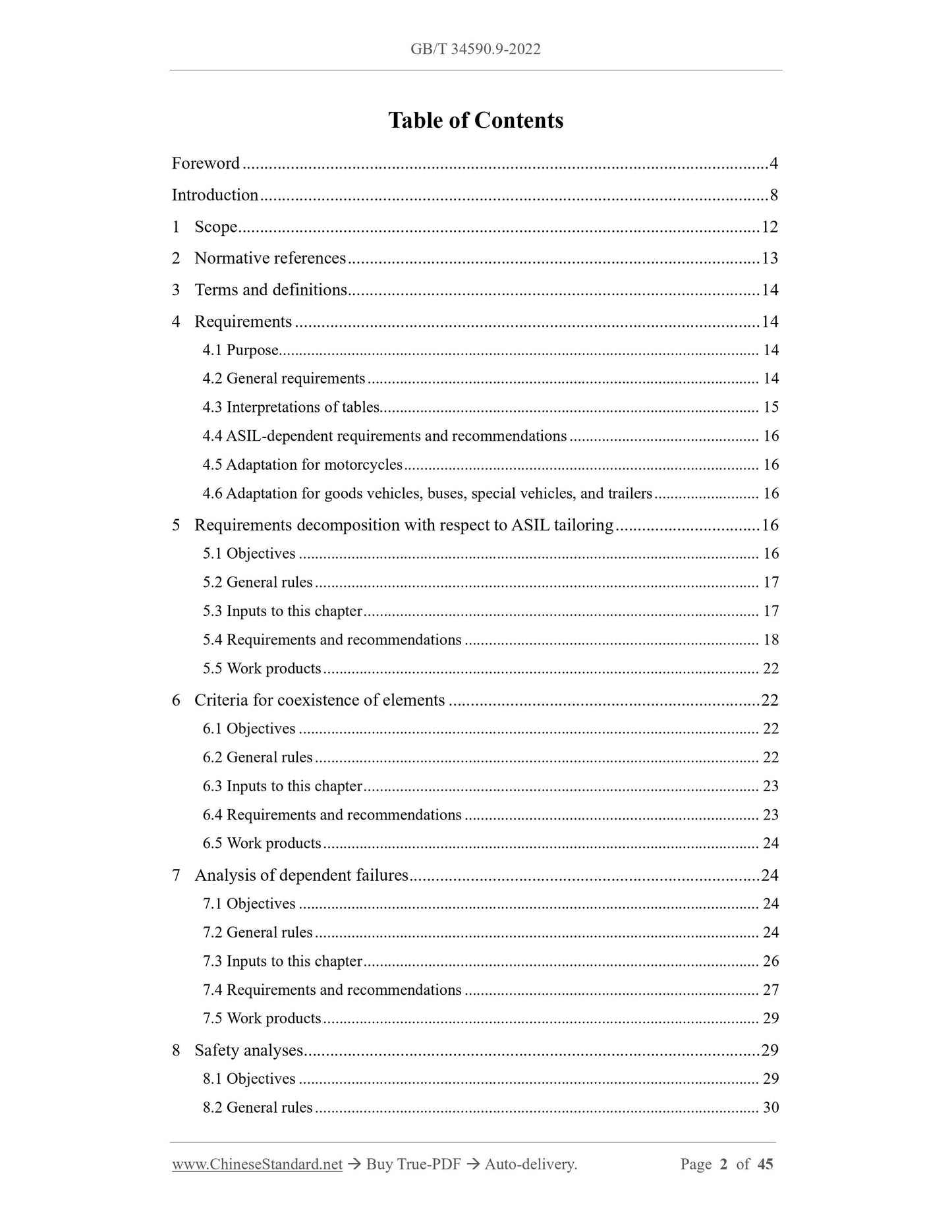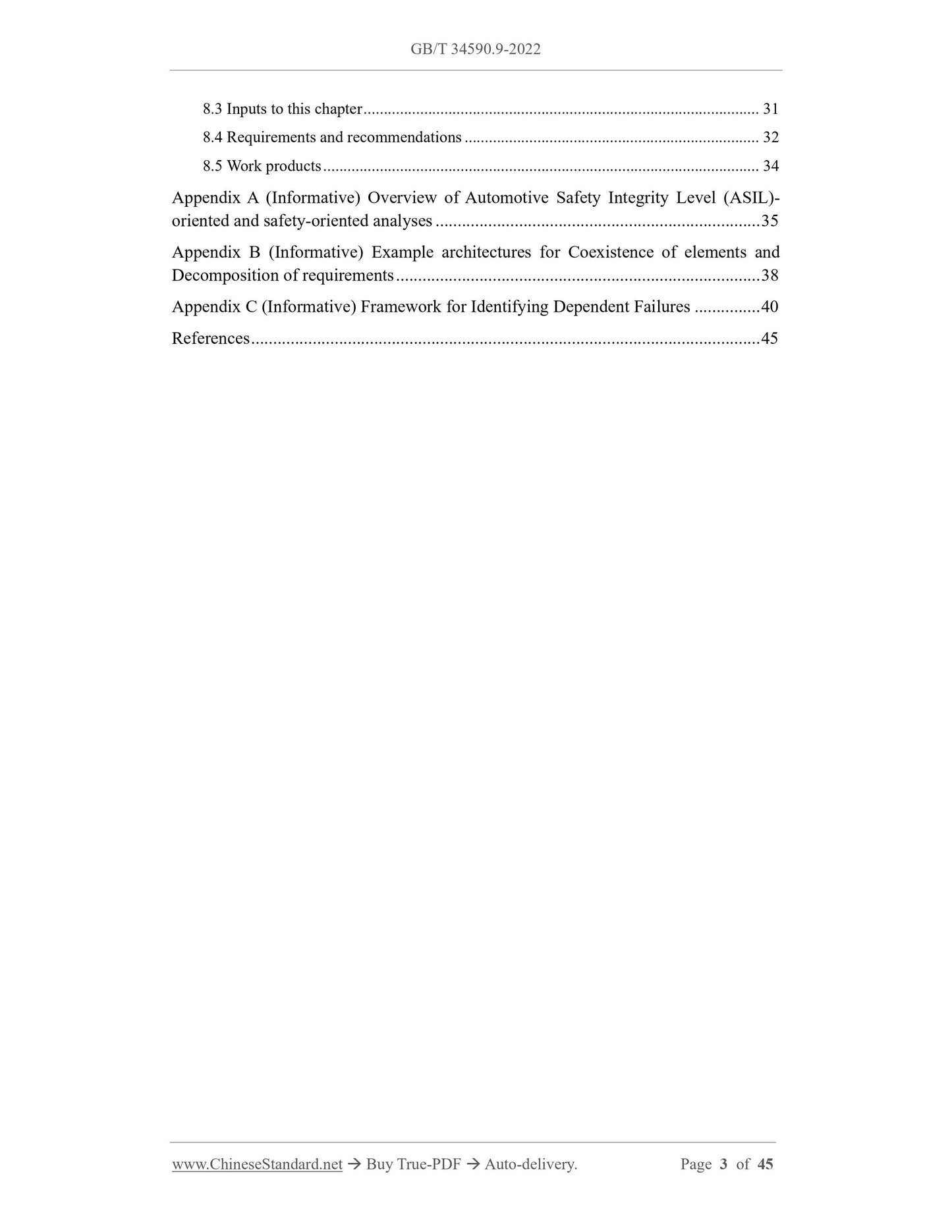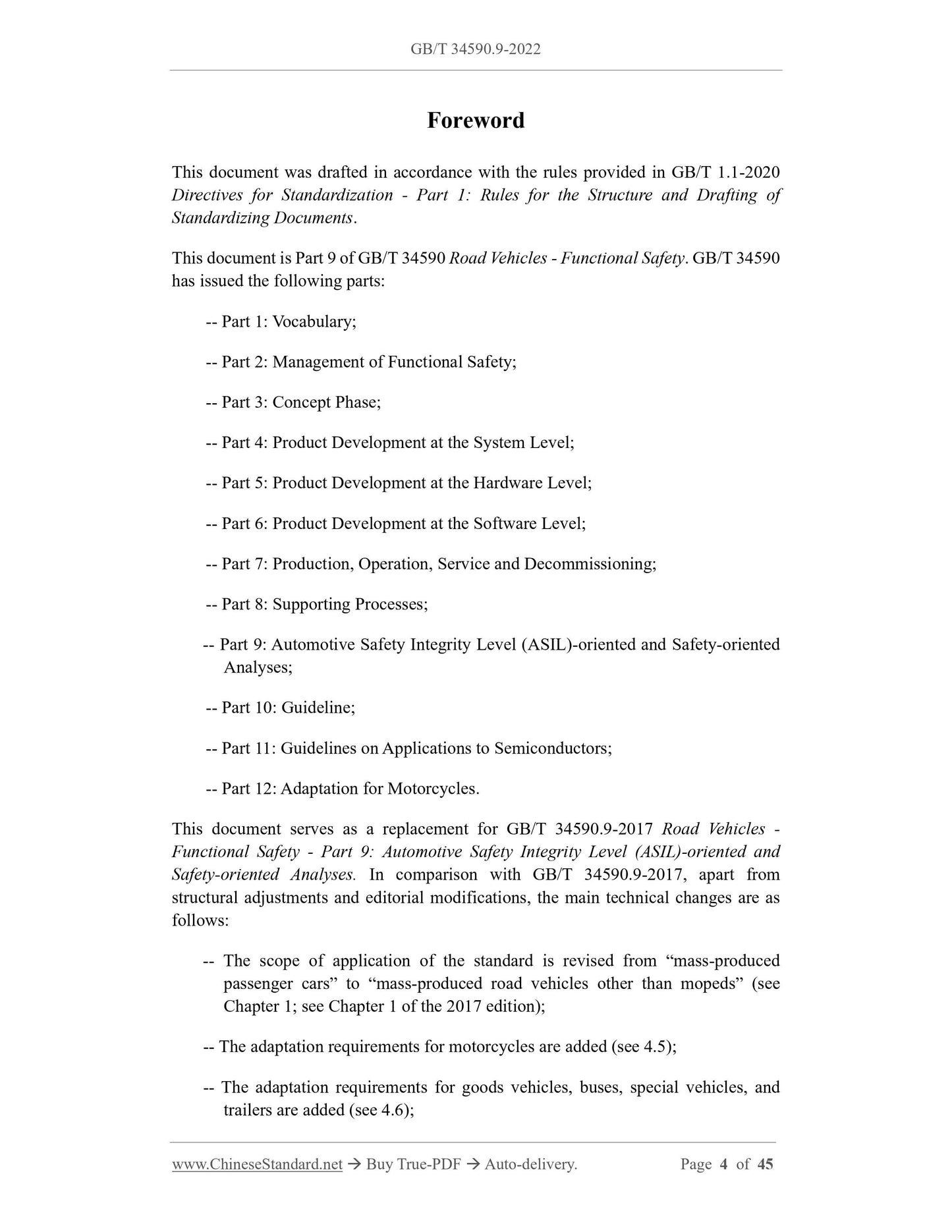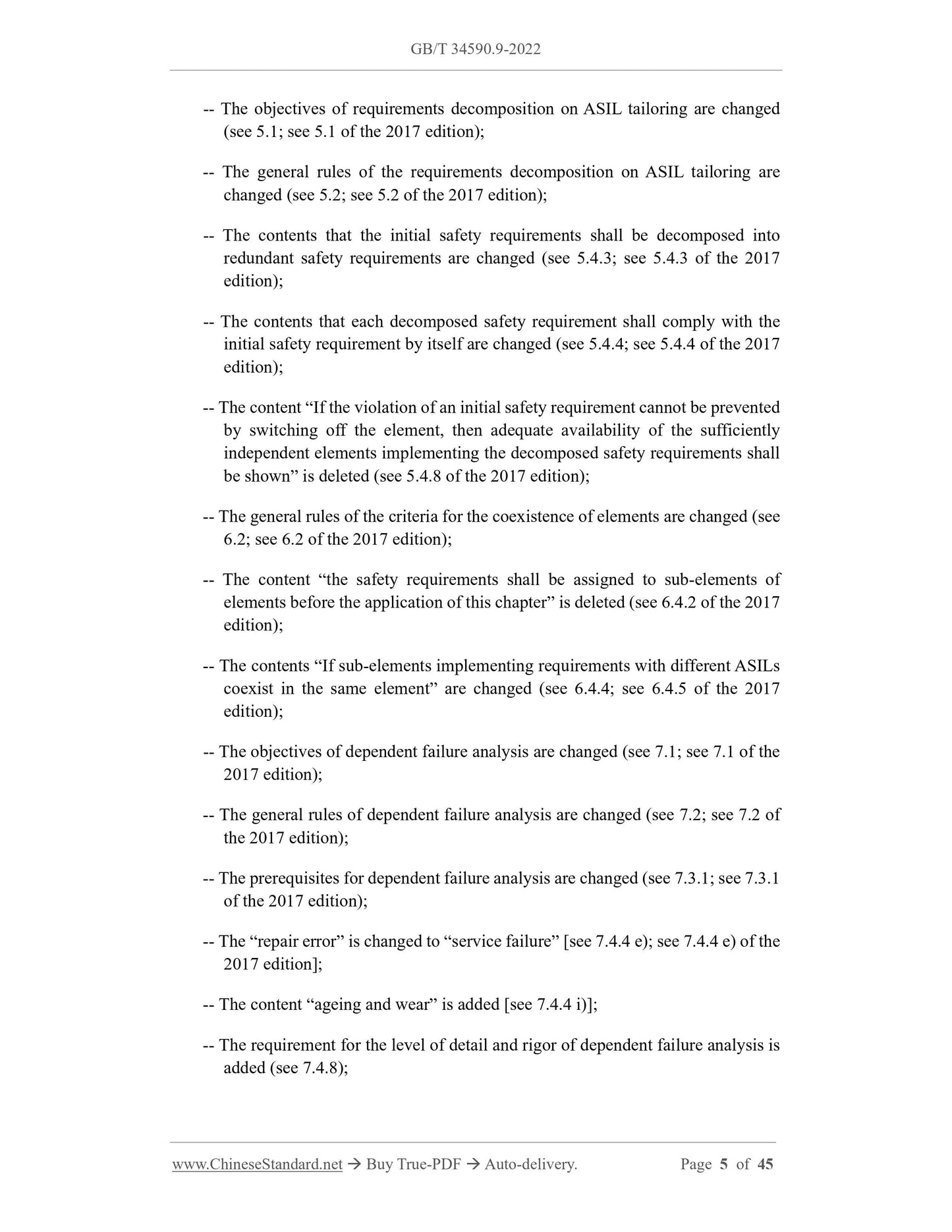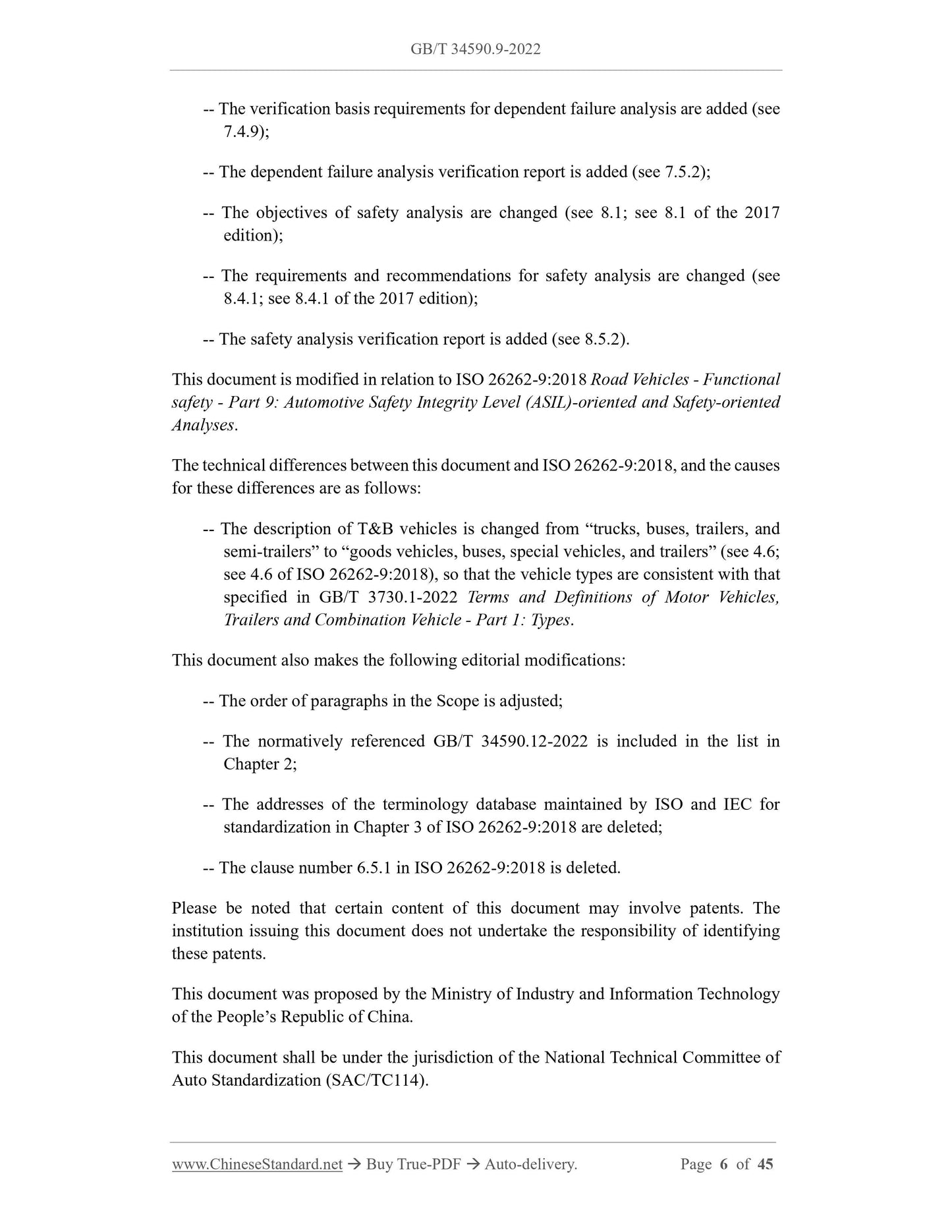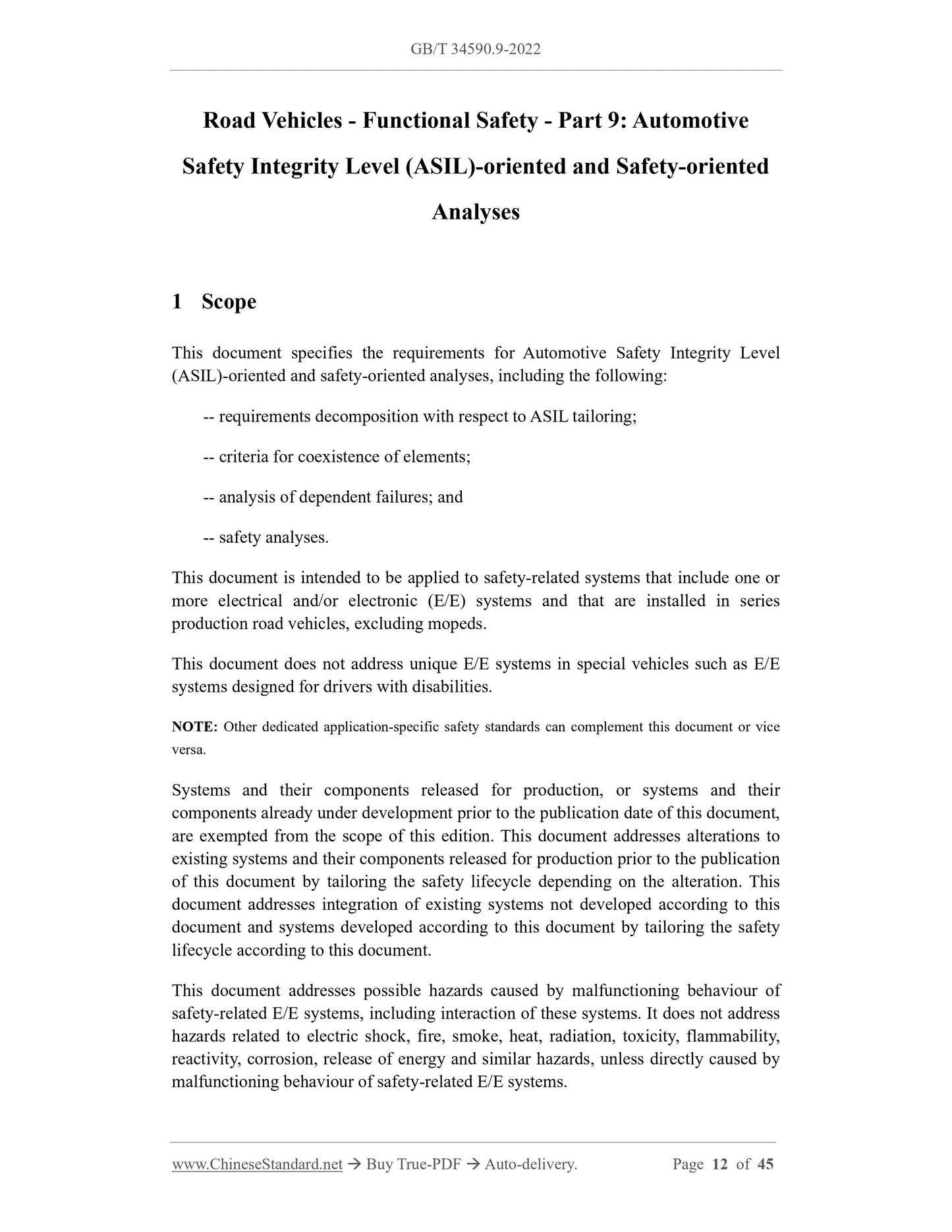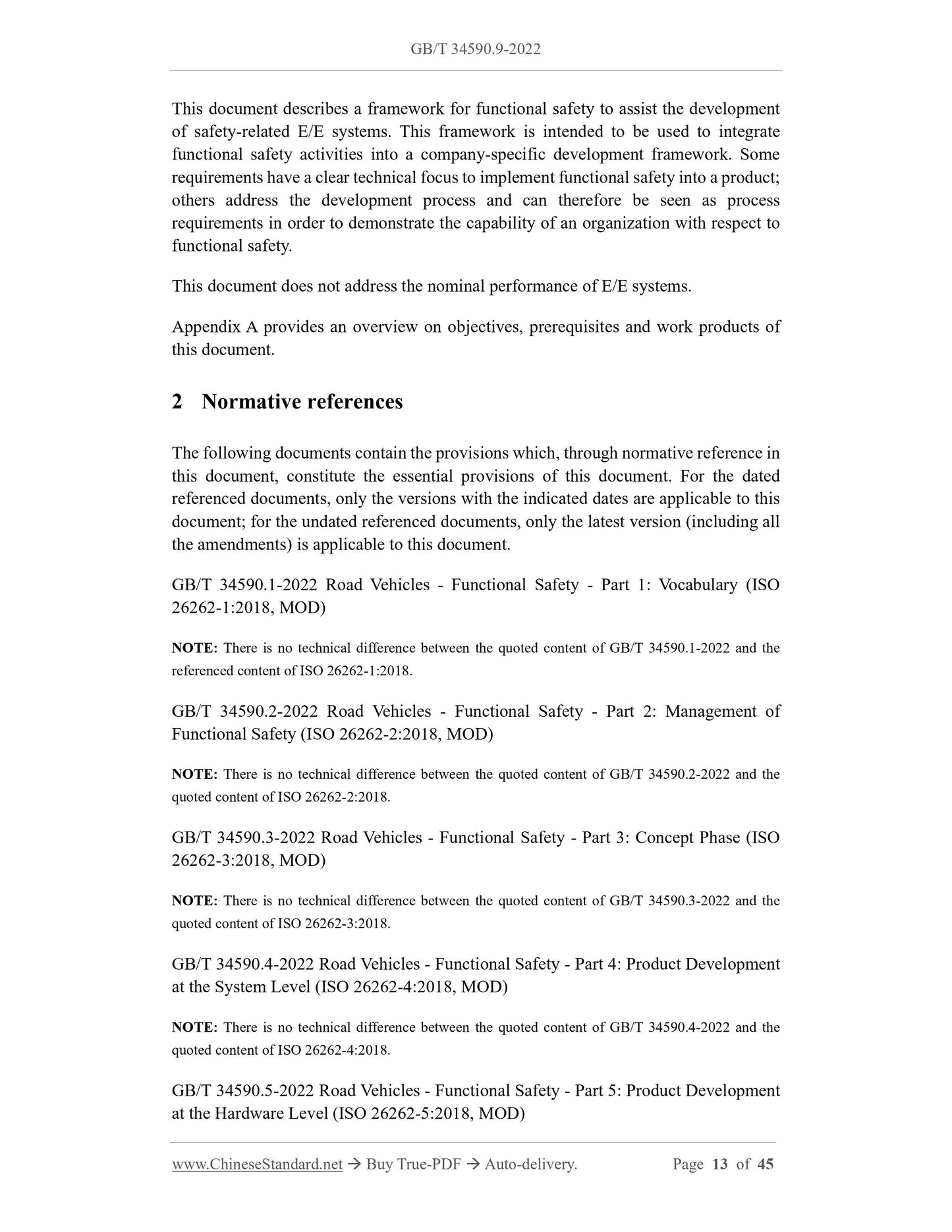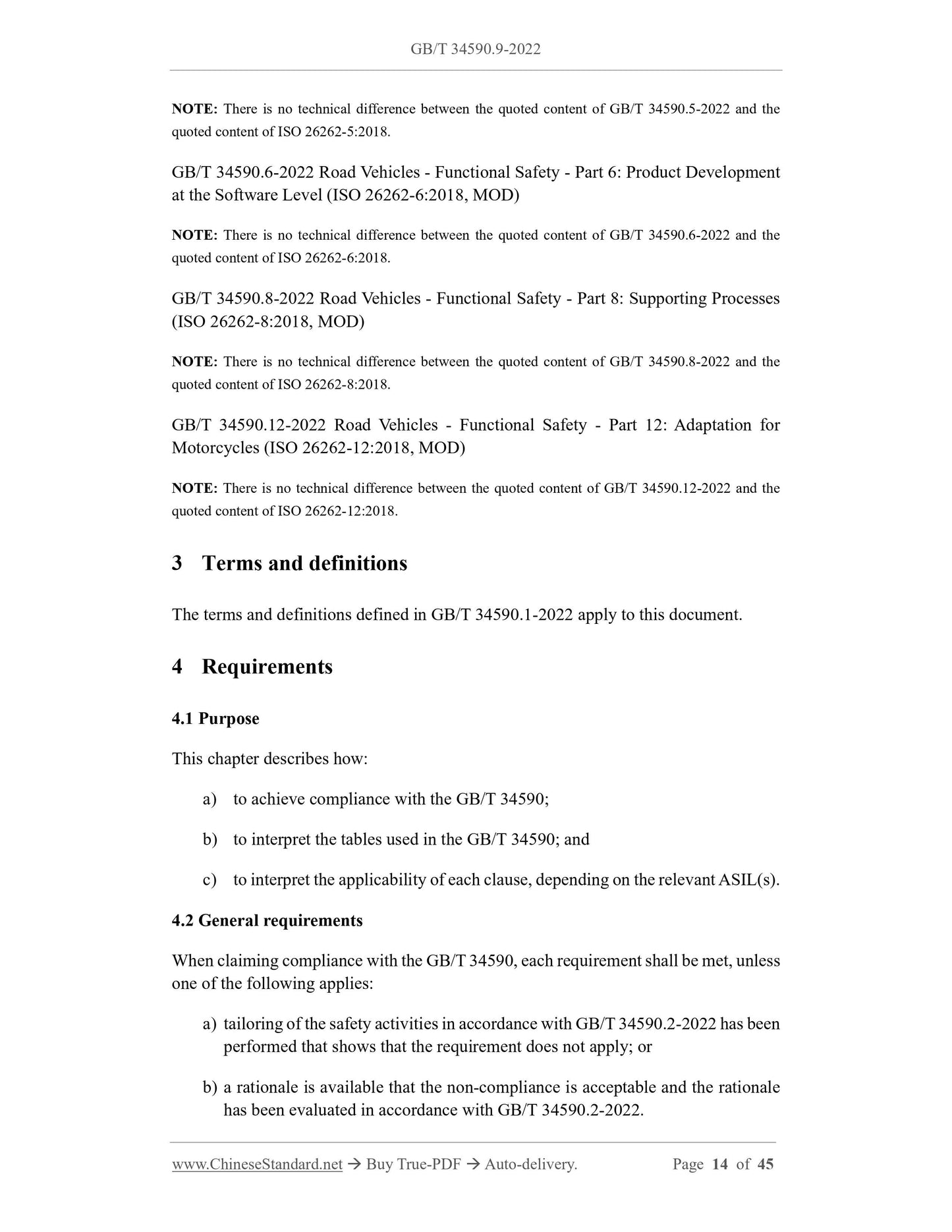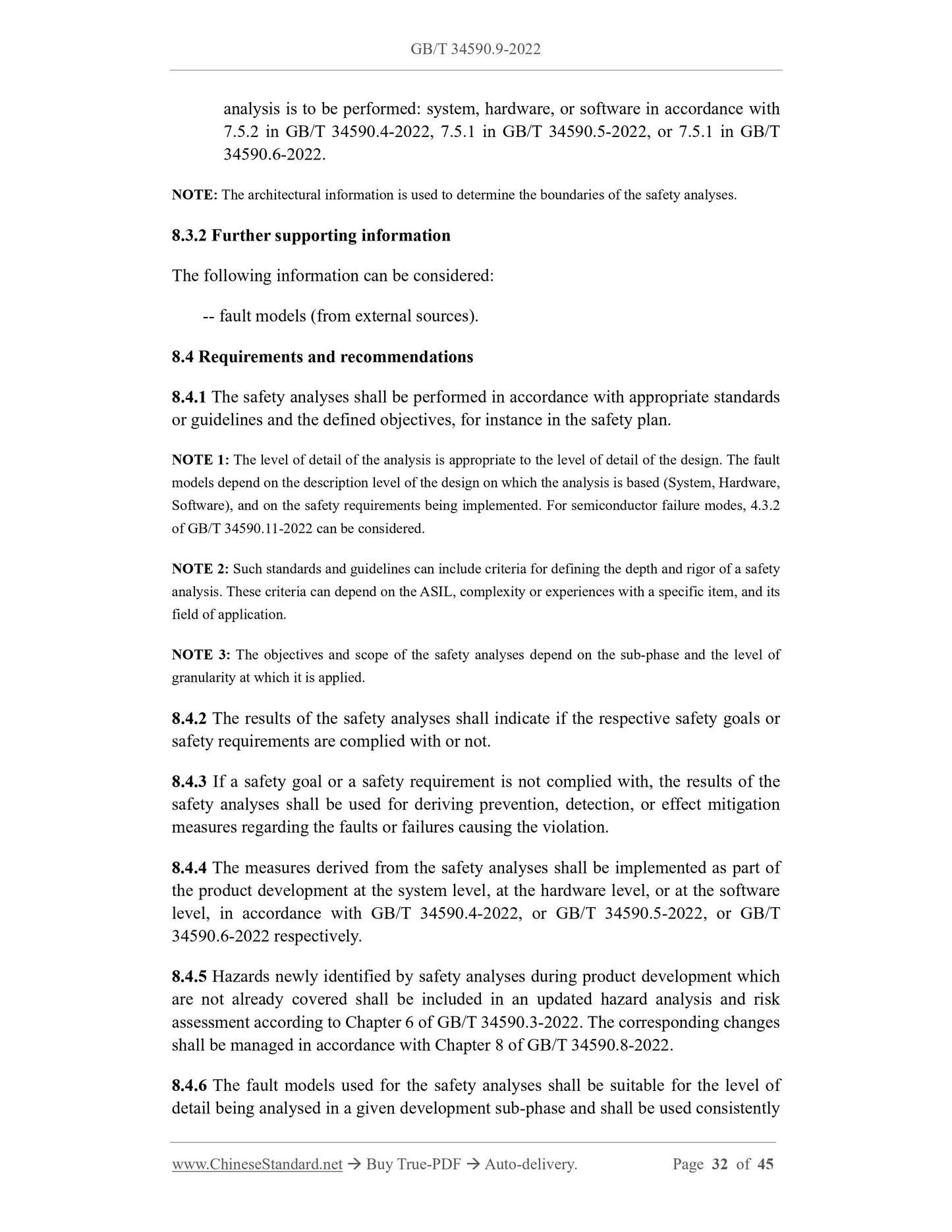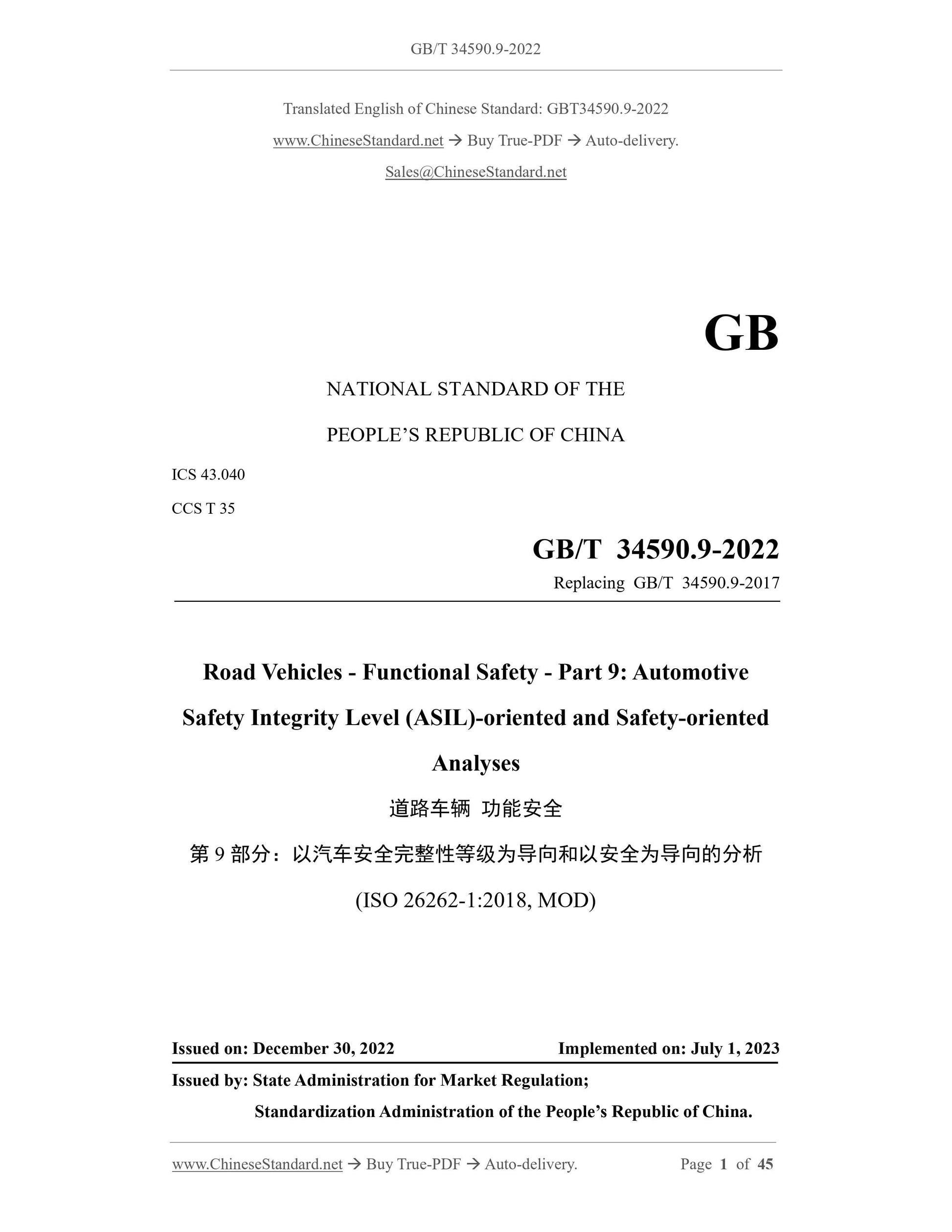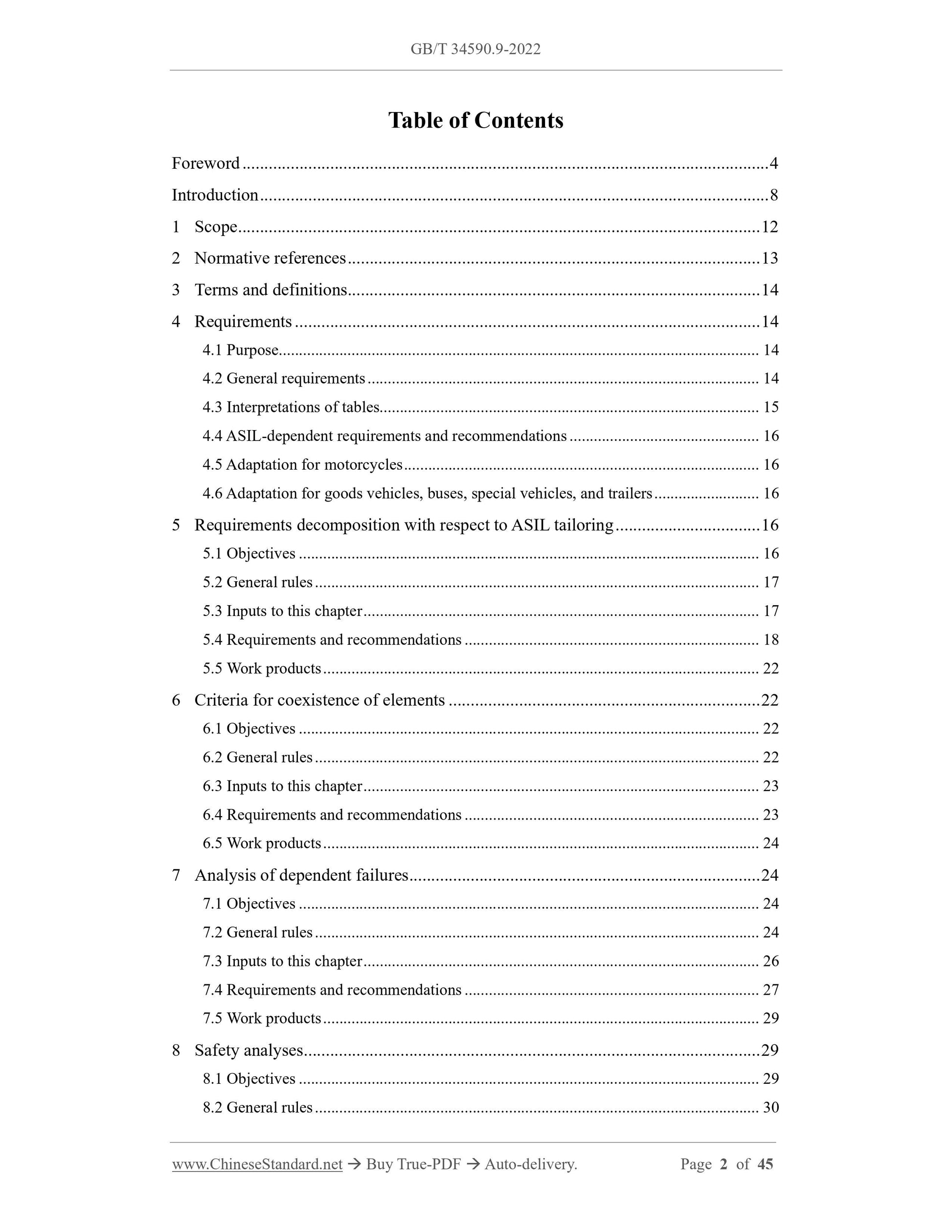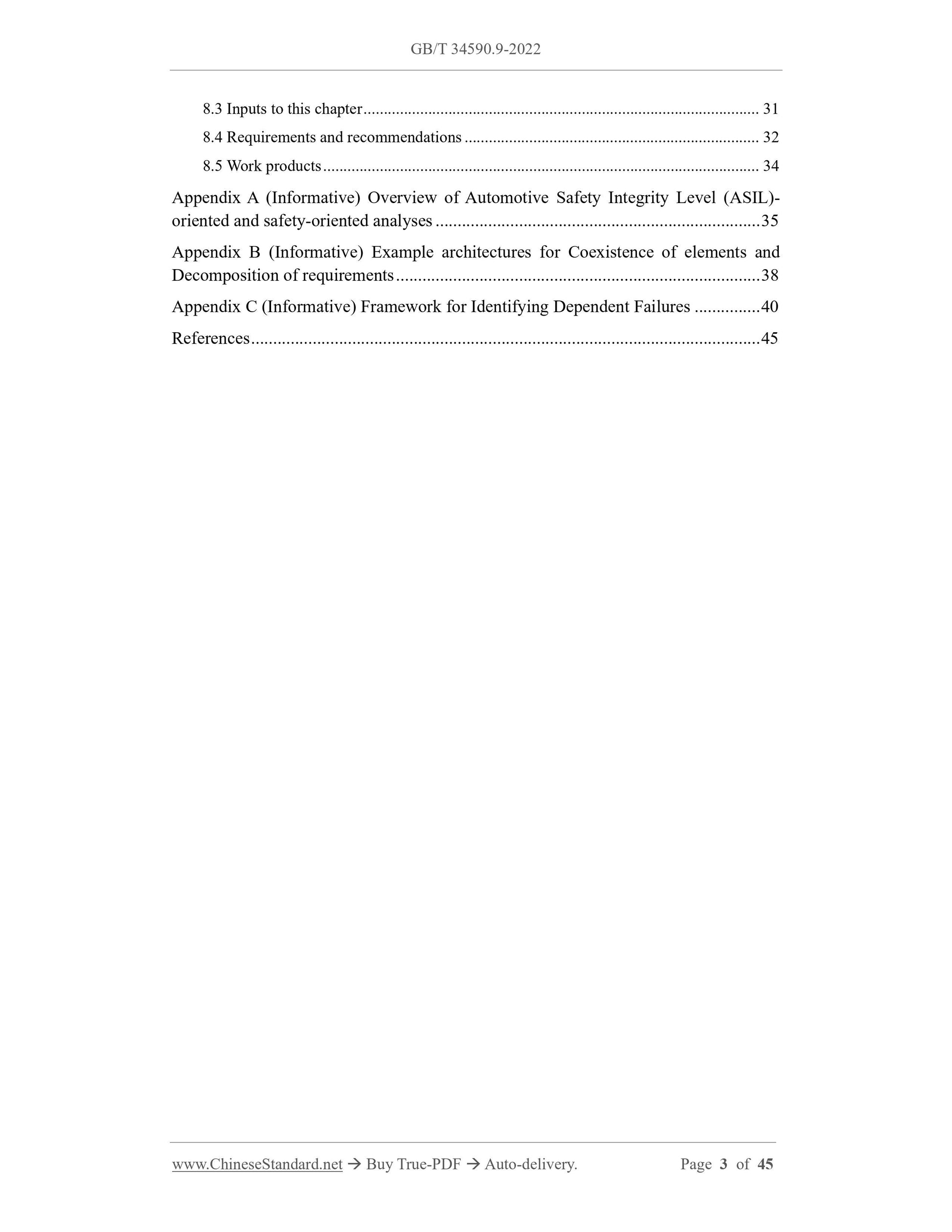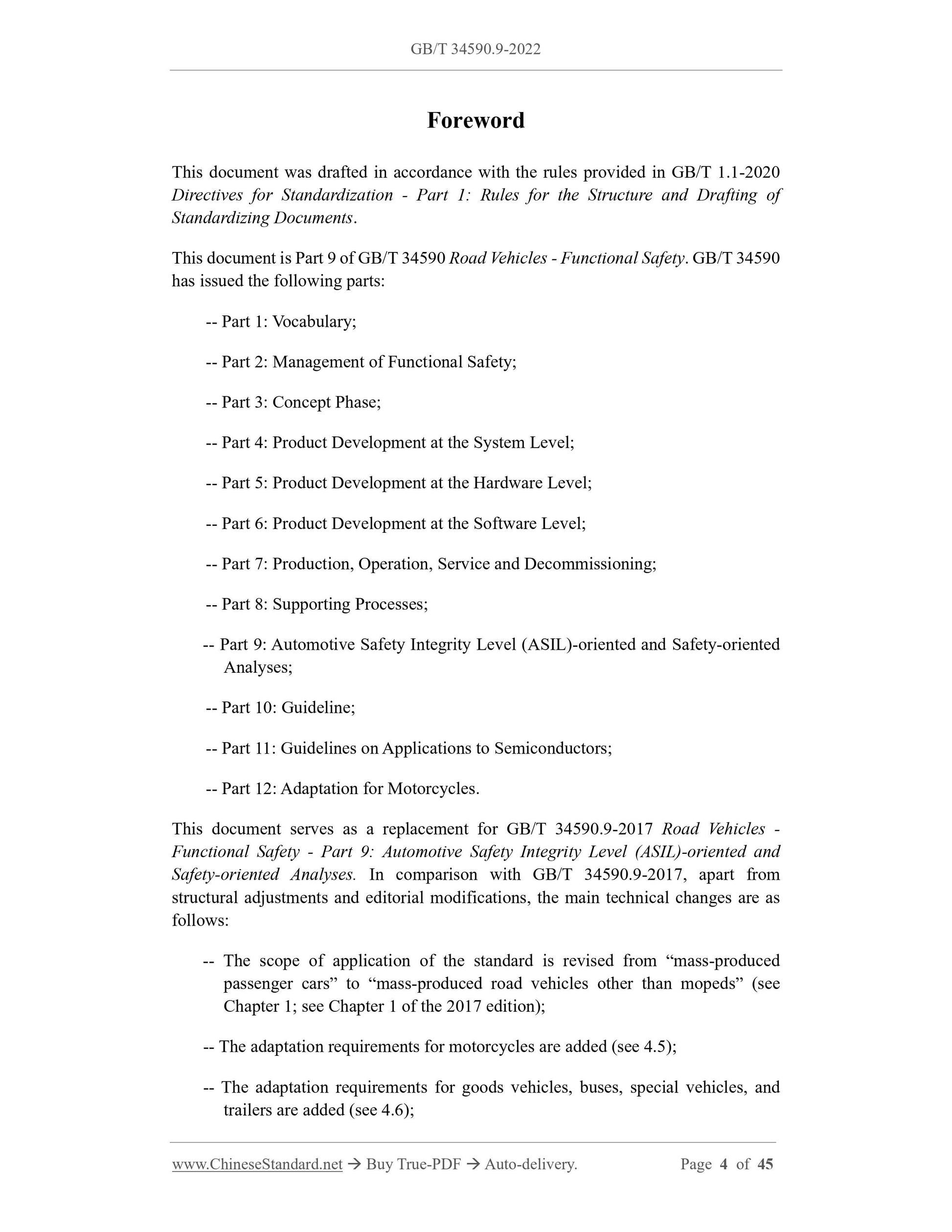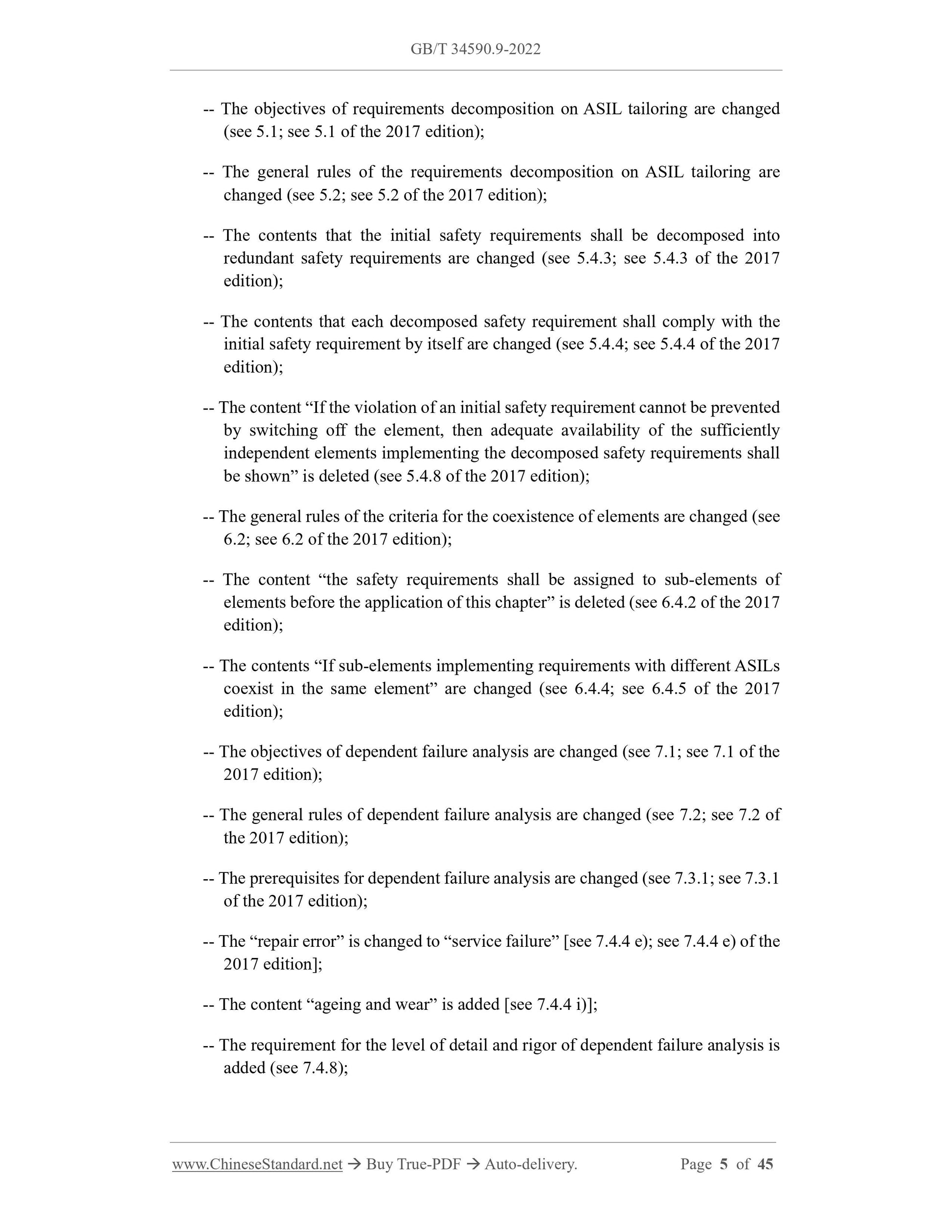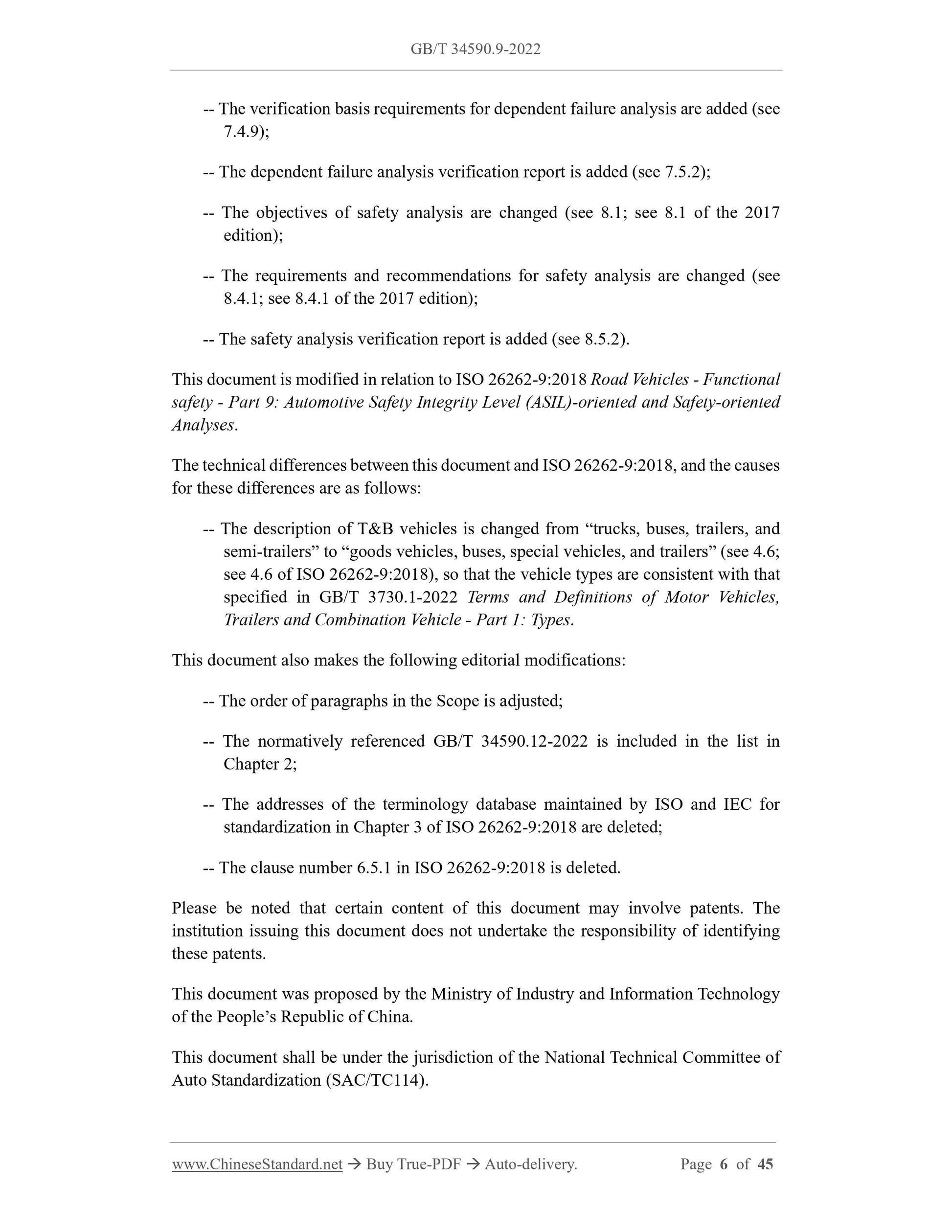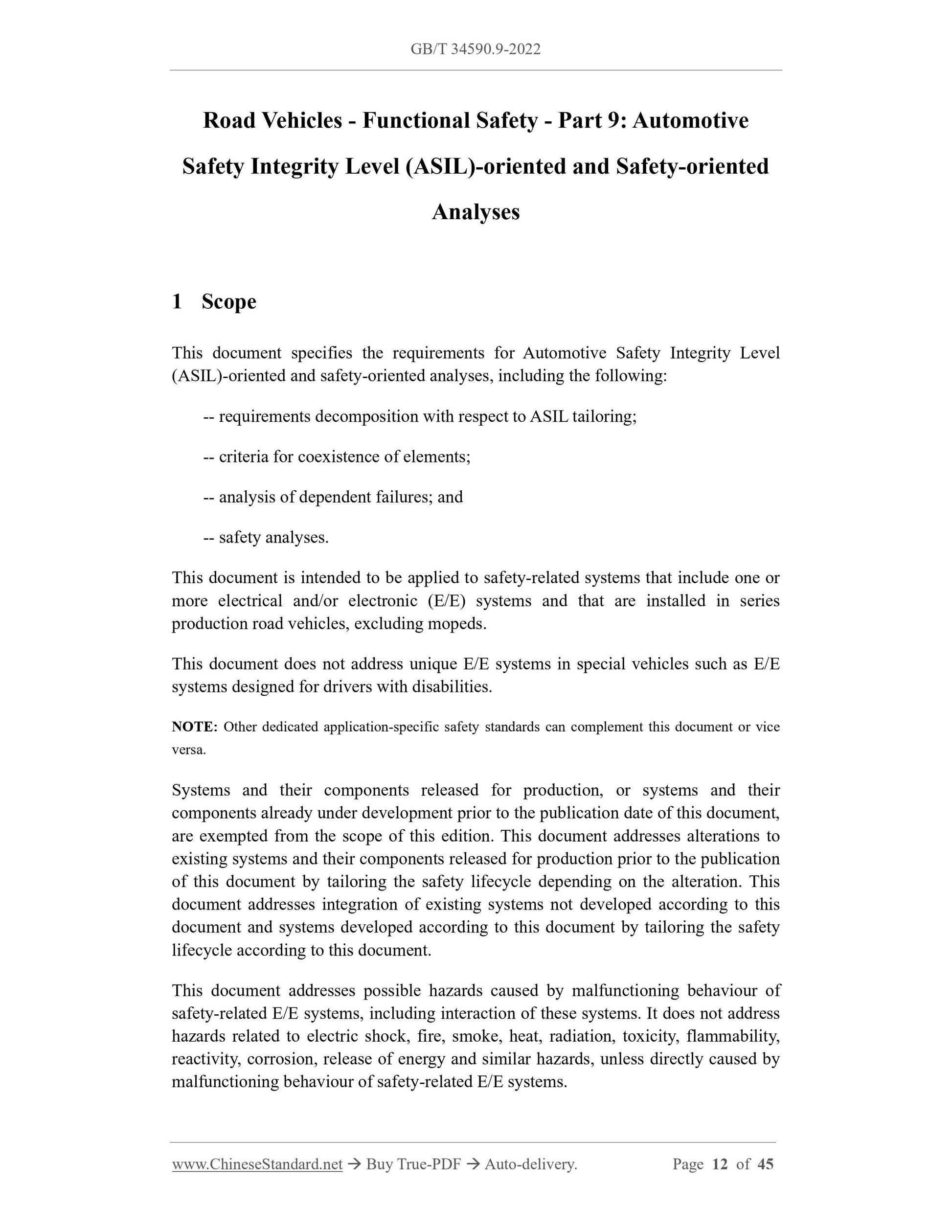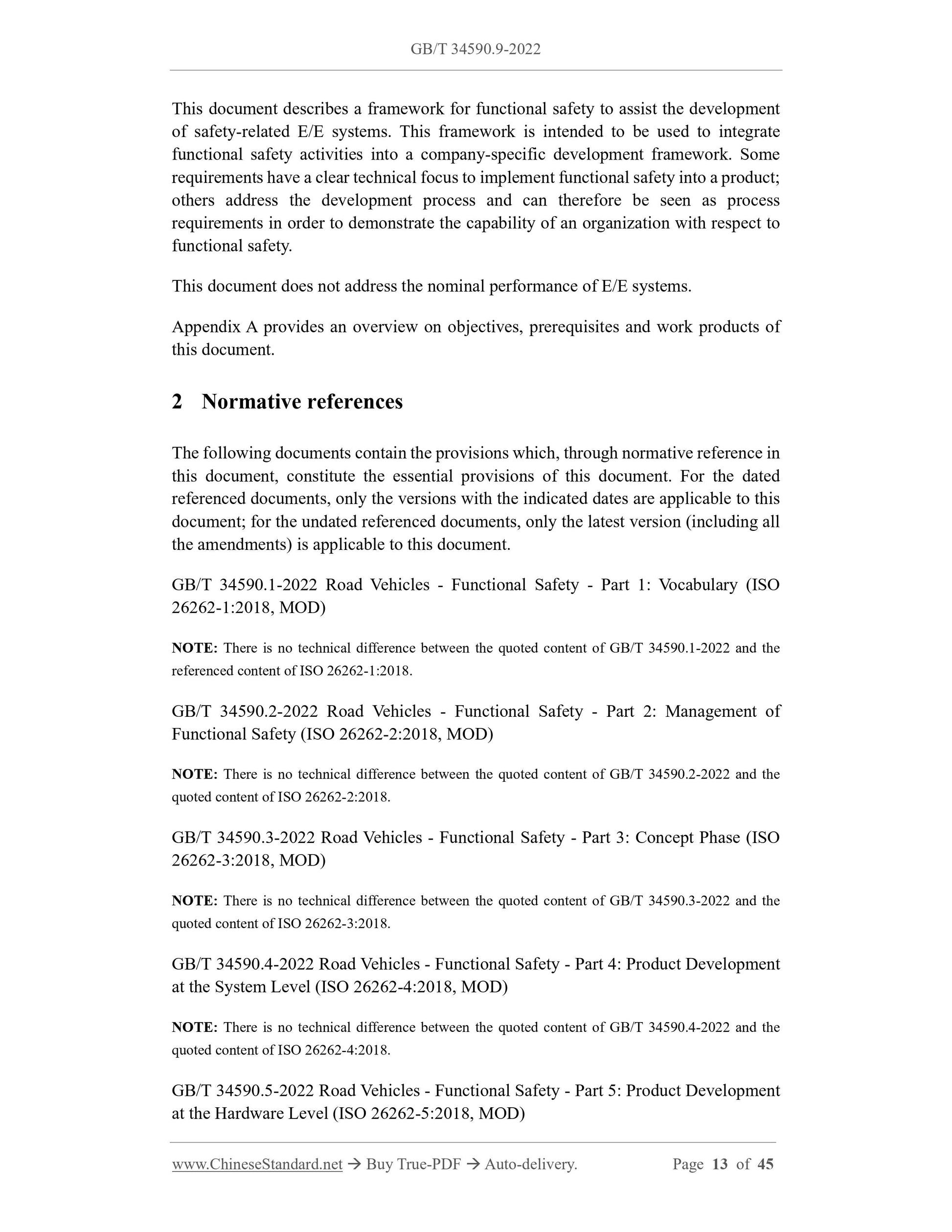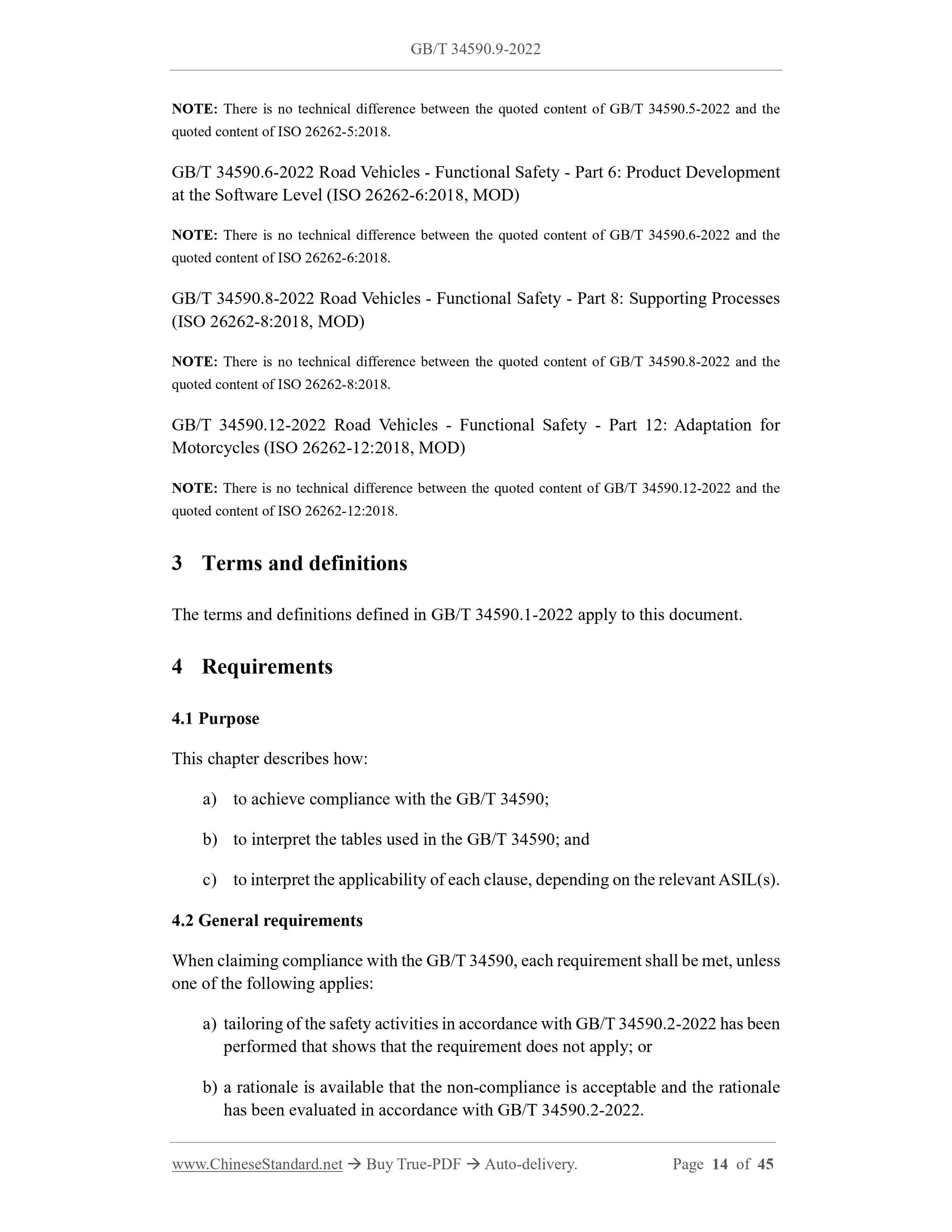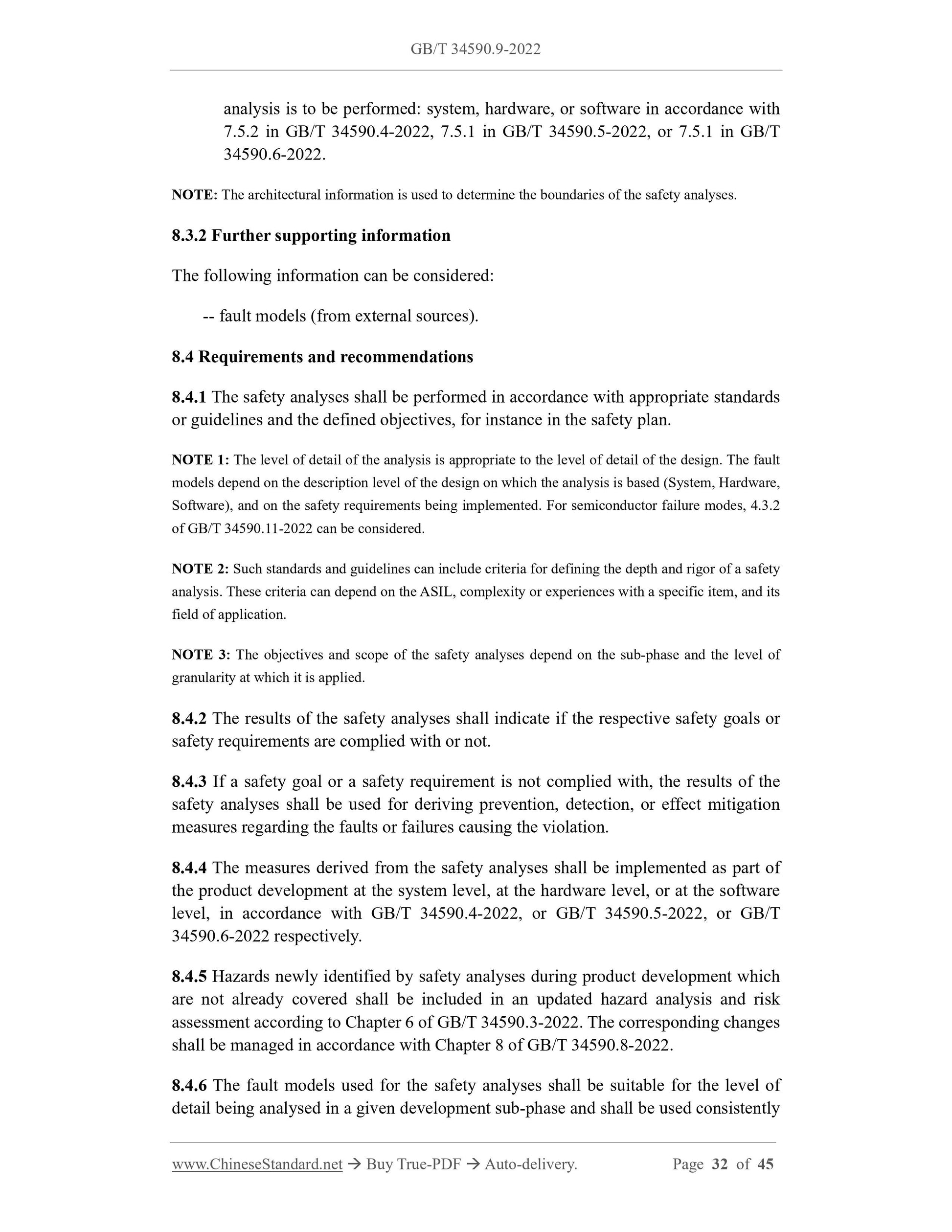1
/
of
10
www.ChineseStandard.us -- Field Test Asia Pte. Ltd.
GB/T 34590.9-2022 English PDF (GB/T34590.9-2022)
GB/T 34590.9-2022 English PDF (GB/T34590.9-2022)
Regular price
$410.00
Regular price
Sale price
$410.00
Unit price
/
per
Shipping calculated at checkout.
Couldn't load pickup availability
GB/T 34590.9-2022: Road vehicles - Functional safety - Part 9: Automotive safety integrity level(ASIL)-oriented and safety-oriented analyses
Delivery: 9 seconds. Download (and Email) true-PDF + Invoice.Get Quotation: Click GB/T 34590.9-2022 (Self-service in 1-minute)
Newer / historical versions: GB/T 34590.9-2022
Preview True-PDF
Scope
This document specifies the requirements for Automotive Safety Integrity Level(ASIL)-oriented and safety-oriented analyses, including the following.
Basic Data
| Standard ID | GB/T 34590.9-2022 (GB/T34590.9-2022) |
| Description (Translated English) | Road vehicles - Functional safety - Part 9: Automotive safety integrity level(ASIL)-oriented and safety-oriented analyses |
| Sector / Industry | National Standard (Recommended) |
| Classification of Chinese Standard | T35 |
| Classification of International Standard | 43.040 |
| Word Count Estimation | 30,327 |
| Date of Issue | 2022-12-30 |
| Date of Implementation | 2023-07-01 |
| Older Standard (superseded by this standard) | GB/T 34590.9-2017 |
| Issuing agency(ies) | State Administration for Market Regulation, China National Standardization Administration |
Share
